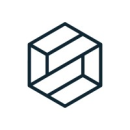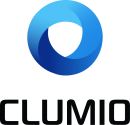Domestic travel for many has become second nature: You pack your carry-on bag, show your ID at security and soar from coast to coast in a matter of hours with ease.
Traveling to an international destination, however, comes with a complex amount of preparation. Coordinating time zones, possessing properly approved documentation and packing translatable electrical outlets all require additional effort on the traveler’s behalf. Having a grasp on the language can also drastically enhance or hinder the experience depending on cultural barriers — and without a proper method of communication, travelers are bound to get lost along the journey.
For product managers working in tech, collaborating with engineering teams can often feel the same way. While speaking with marketing teams or customers can feel as seamless as boarding a short flight to LAX with TSA pre-check, attempting to create alignment with engineers can feel closer to entering a foreign country with an expired passport without having proper strategies for cohesive communication in place.
So how can product managers and engineering teams possibly work together effectively without getting lost in translation? According to Dana Liu, product manager at home finance company Point, it starts at a place of mutual understanding — also known as the “why” of the product needs.
“The ‘why’ informs everything we do, and it is critical that there’s a shared understanding of the bigger picture to guide our work,” she said. “It’s important to collaborate with engineering as soon as possible from the start of a project so we can work towards the same goals in the most efficient manner.”
To learn more about how product managers and engineering teams are eliminating their barriers of collaboration, Built In San Francisco sat down with Liu and three other product leaders to learn about the key ingredients for establishing stronger relationships. While every organization’s product and engineering teams overlap in different ways, one thing is clear: A sense of understanding and trust can take a product’s success off the runway and into more successful skies.

Robust Intelligence offers failure prevention for artificial intelligence.
As a product manager, what are the key ingredients for a successful relationship with your engineering team?
A successful product manager and engineer relationship is built on mutual understanding. Good product managers work to remove uncertainty and bureaucracy so their engineering team can work effectively. In turn, engineers should understand that product managers can’t make every small decision and should implement quality solutions that solve customer problems. In my experience, mutual understanding comes from basing the relationship on four concepts.
The first concept is communication. It is important to have regular communication with your engineering team in order to ensure that everyone is on the same page. This can be done through regular meetings, email or even quick chat messages.
The second is trust. It’s important to trust your engineering team and give them the freedom to do their jobs. This includes letting them make decisions and trusting their judgment.
The third is respect. You should respect your engineering team and their expertise. This means listening to their ideas and opinions and taking them into consideration.
The fourth and final is cooperation. You need to cooperate with your engineering team in order to get the best results. This includes working together on projects and being willing to compromise.
Describe how your product and engineering teams intersect, and how this organizational structure helps build the relationship between the two.
Product and engineering teams at Robust work together to build software that will solve our customers’ problems, and this main focus helps focus the relationship. The customer’s goals are at the forefront of all of our interactions. We release software every six weeks, and the things we will do in a release will be recorded on our roadmap.
The long-term roadmap — with more than three releases — is owned by company, engineering and product leadership, and it is often more strategic in nature.
The medium-term roadmap — focused on three releases — is owned by the product manager and the engineering lead for a given product line. As the PM for the ML team, I work with the various ML leads to help define this roadmap in order to improve our products along various axes.
The short-term roadmap — one release — is also owned by the PM and engineering leads, but the engineering team takes more ownership in the actual planning and execution of the individual projects.
Furthermore, the PM for a given project will continually be involved with talking to customers to get feedback on this short term and medium term roadmap to ensure that their problems are being solved.
Good product managers work to remove uncertainty and bureaucracy so their engineering team can work effectively.”
What communication strategies do you use to ensure engineers share your product vision?
I constantly communicate the customers’ needs and requirements, and how the product vision aligns with them. This additional context will empower engineers to make product decisions on their own, and will help build a mutually trusting relationship.
I enable engineers to share their ideas and suggestions for the product vision. This helps ensure that the vision is something that everyone feels invested in and is bought into. It is also important to make sure that everyone feels like their voices are being heard and that their suggestions are valuable.
I encourage engineers to take part in customer research and development activities. This helps them understand the customer’s perspective and how the product vision aligns with customer needs. It is also a great opportunity for engineers to get feedback on their work.
I involve engineers in product demos and presentations. This builds better understanding of how the product works and how it is being received by customers. It is also a great opportunity for engineers to get feedback on their work.
Point is a fintech company that offers home financing options to homebuyers through a shared equity process.
As a product manager, what are the key ingredients for a successful relationship with your engineering team?
As a product manager, I always try to work in the context of the organization, overall business goals and an understanding that product needs to partner effectively with engineering to deliver successful solutions to our customers.
As a tech startup, this can constantly change — and while this can pose some challenges, the ever-evolving nature keeps things fun. Engineers can be very creative and bring different perspectives as we tackle hairy problems and come up with solutions that will better satisfy customer needs. I find that the best relationships between product and engineering are built on mutual respect and trust, and this is something that continues to strengthen over time.
Describe how your product and engineering teams intersect, and how this organizational structure helps build the relationship between the two.
Our product, engineering and design teams are a tight-knit group. While our product team is more closely aligned with the business side of the organization, all three teams routinely work together as the main verticals of the business that are responsible for overall product development.
Generally, we have a few product managers paired with a group of engineers and designers which allows us to move nimbly without having to translate too much between teams. As a whole, the organization views product and engineering as a broader team that helps deliver software solutions for our customers. This close alignment is incredibly helpful because other members of the business are more apt to sharing context and looping in members of both product and engineering with questions, ideas and feedback.
I find that the best relationships between product and engineering are built on mutual respect and trust.”
What communication strategies do you use to ensure engineers share your product vision?
Communication between the product and engineering teams has to start with the understanding that a shared product vision isn’t developed in isolation by just one party. It’s something that evolves and shifts as we learn more about the needs of customers we’re serving and as our customer base grows.
As a cohesive team, we typically set aside time to discuss and understand the broader vision — not just the immediate outcomes. Setting the context of who the customer is, their problems, their biggest needs, the ideal solutions and how we will address them is crucial dialogue to have as a synchronous group of product developers. I like to start at the problem and work backwards to where we want to be, which makes it easier to logically trace the elements we need to build.
Additionally, I try to create a host of different working environments where I engage with the engineering team: whether that be large groups, small groups or one-on-one meetings to accommodate different working styles. Some people thrive better in certain contexts and I always want to make sure I’m providing that positive working environment for myself and my peers.
Next Insurance seeks to provide customizable and affordable insurance solutions to small businesses.
As a product manager, what are the key ingredients for a successful relationship with your engineering team?
This might be the most important question you can ask yourself if you want to be a successful product manager. If you are brand new to a company and just getting to know your engineering team, you have to start by building rapport. Get to know each other as people — everyone needs to feel that product and engineering are all one team.
Ask your engineering team what is painful, unproductive and inefficient in how product and engineering works together today. Is there a lot of rework in the requirements process? How often are you meeting and are the meetings accomplishing what you need? Pick one or two pain points and pilot a process improvement — it’s always good to start small and then build from there. This will work especially well if engineering has played a key role in designing that improvement.
Lastly, involve engineering early in your requirements definition process. You don’t want to spend three weeks on requirements in a vacuum and then hand this to an engineer. Loop in at least one engineering domain expert to review your initial hypothesis. That way engineering is a partner in what you are trying to achieve, rather than a function only responsible for execution.
Describe how your product and engineering teams intersect, and how this organizational structure helps build the relationship between the two.
We used to organize our product group into squads. Each squad was led by a product manager with a fixed team of engineers. This gave each squad a lot of autonomy, but also imposed a lot of limitations. If a product manager needed to work with an engineering domain outside of their squad, they could not get those resources. So we ended up working on things that fit what the squad could do rather than what would best solve the customer’s problem.
Today, each product manager owns a mission. A mission represents a customer problem we want to solve with a clear, measurable goal. Engineering is now a single engineering team rather than subdivided into squads. Engineering managers form “feature teams” for each initiative in the backlog. This means product managers don’t have to tailor their roadmap to a specific engineering domain, and it also gives engineering managers much more flexibility in how to staff against our roadmap. This has been a very empowering change for both teams: Now product can focus on solving customer problems, and engineering can determine what will be the best approach for execution.
Get to know each other as people — everyone needs to feel that product and engineering are all one team.”
What communication strategies do you use to ensure engineers share your product vision?
We have a mini all-hands meeting for our product group every month. Any cross-functional teams like data, design, research, operations and engineering that are helping us to achieve our product goals are invited to join. We talk about how customers are using what we’ve recently shipped and we look at upcoming roadmaps. The call is fun, engaging and open for questions — not a readout or status update. You can use touchpoints like this to show everyone the connection between their day-to-day work and your long term product vision.
Whether your company approaches product and company planning annually, bi-annually or quarterly, it’s important to make engineering a key partner in this process. Lead retrospectives on what you’ve accomplished and where you can be better. Ask your engineering partners where they think the biggest opportunities are for the business and for your product domain. As you start to align on a vision and key opportunity areas, it’s critical to make sure all teams understand how your product vision will lead to the creation of value for the customer and company.

Clumio is a SaaS-based data protection company that delivers private, public and enterprise data protection services on a single platform.
As a product manager, what are the key ingredients for a successful relationship with your engineering team?
The critical ingredients for a successful relationship with my engineering team revolve heavily around trust and an end-to-end understanding of the project and goals. My engineers need to trust that I have done exhaustive research upfront before defining project requirements and that the end solution is something that customers will love. Meanwhile, I need to trust my engineers to deliver on my requirements innovatively while ensuring we’re meeting committed timelines and budgets.
Additionally, we all need to be on the same page from the initial project conceptualization through design and development, GA and post-GA. If things are not fully understood, we take the time to explain all aspects of our decisions.
Describe how your product and engineering teams intersect, and how this organizational structure helps build the relationship between the two.
Even though the product organization and engineering organization are separate, the two teams have a very tight relationship. We’re encouraged to be highly collaborative, and the lines between the organizations are often blurred. For example, the engineering and product teams work closely together when training the sales team on new features, co-writing release blogs for our website, hosting webinars and even greeting customers in the Clumio booth at trade shows.
My engineers need to trust that I have done exhaustive research upfront before defining project requirements.”
What communication strategies do you use to ensure engineers share your product vision?
Communication is key to any team’s success. Without strong communication, critical design choices are missed — leading to a poor user experience with a finished product or feature. To avoid this, our teams constantly communicate from regular standups to Slack communication and comments on Figma designs. This ensures that even when working across multiple time zones, all team members working on a project are always up to speed on the latest happenings with the task at hand. We even do weekly brainstorming sessions to focus on things we plan on doing further into the future, which lets us anticipate future needs that we can address in current projects.















